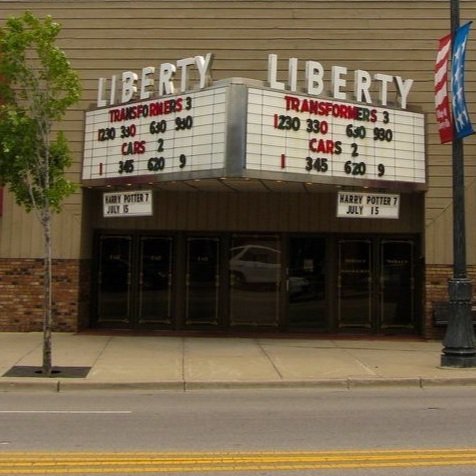The current state of the movie-going experience
November 17, 2021
The closing of the historic Libertyville theater in Illinois has awakened a conversation about what is truly going on at the movies.
“I loved the Libertyville theater but I hadn’t gone there in years,” Libertyville librarian Rebecca said. “We mostly [drove] past it.”
Many decades after its opening, the Libertyville theater on Milwaukee Avenue, owned by the Rhyan family, is coming to a close. It had been a golden age for the company, standing as an example of a self-run movie theatre. The theater first opened its historic doors to the people of Libertyville in 1937. The era of Edison and the Kinetoscope along with sorts of other inventions in the early film have passed, and now people are watching them at home.
The builder, Fred W. Dobe, along with high ranking architects from Chicago, created the theater in hopes to give people a more advanced movie experience. Since then it has been remodeled but the original had the Deco Walls and the towering cinema spire that would have been seen outside of Time Warner.
“The Rhyan family [owns the theater] now, and they are the responsible party for its selling,” Rebecca said.
The closing of the Libertyville theater follows a pattern of many classic theaters closing around the country. This prompts a discussion: how do people watch movies nowadays? And how has the movie theatre evolved?
“We hadn’t gone to see a movie for quite some time because covid was still raging,” CLC Film Studies Professor, Pat Gonder, said. “My wife and I are both vaccinated since we both had our fair share of troubles with the illness. We were masked, the people around us were masked, and we felt safe in a movie theatre.”
The COVID-19 pandemic seemed to accelerate the process of movie theaters closing with many people avoiding going to crowded places. Some are wondering whether it is time to close them indefinitely, but professor Gonder disagrees.
“I think movie theatres are an important part of the culture,” Gonder said.
It is important to point out that movie theaters do not exist exclusively as their own buildings.
“The mall had a theatre, [and] then there’s the big AMC 4D IMAX complex that has become popular,” Gonder said. “[However, the type of theater that may] not be succeeding is the small picture art house theatre which I hope can make it through the changing times.”
We all remember the drive-in movie theatre. Pat Gonder sure does.
“I remember working in a drive-in,” said Gonder with a chuckle. “A place in McHenry, I think, [and] they showed B grade Horror films and X- rated films after dark. I was working in attendance and ticket sales; that was the last summer they were operational. They shut down after that. They were doing anything that could at that point to stay afloat.”
His story brought up nostalgia for film, both an on-screen and off-screen feeling we get from being a part of the movie-going experience.
“The thing with theatres and drive-ins nowadays is that they try to appeal to families that go to the movies, maybe touching on that nostalgia in the process,” said Gonder. “You’ll notice if you go to drive-ins, they will still have the refreshments ads from the 1950s and 1960s with the soda and popcorn singing and dancing.”
Gonder believes the idiosyncrasies of drive-ins are why the drive-in is what it is today. Gonder also commented on why he believes the movie-going experience has changed and says the new methods are very experimental.
“Some IMAX theatres have moving seats and lights – this is what IMAX theatres have been going for, and that is to give us spectacle, something we can’t get at home. Some have capitalized on the dating ritual in America as well and provide dinners as casual dining.”
Despite the commonality of decked-out theatres, some theatres still hold the classic charm that began the rise in popularity that the movie-going experience is known for today.
“On the other end, we have the theatre in Highland Park that shows mostly indie films of any type, art films, and horror films – the movies that go under the radar because they’re not blockbusters.”
It seems like Lake County can offer a perfect glimpse into what the movie theatre once was and what current developments have changed the movie-going experience.







